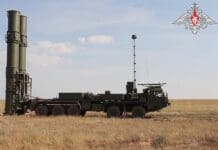This post is also available in:
 עברית (Hebrew)
עברית (Hebrew)
There are over 800,000 registered drones in the US, according to news agencies. The US Administration is seeking expanded powers to detect and disable threatening drones, including asking for new authority to protect airports and for the Central Intelligence Agency (CIA) and other government departments.
The threat posed by the criminal use of drones is increasing and evolving, and the Justice department components cannot protect everyone, everywhere, all the time, according to the department.
According to the first whole-of-government plan released by the White House on April 25, the Domestic Counter-Unmanned Aircraft Systems National Action Plan, the Administration is “working to expand where we can protect against nefarious UAS activity, who is authorized to take action, and how it can be accomplished lawfully.”
In 2018, Congress expanded the authority of the Justice Department and Homeland Security (DHS) Departments to disable or destroy threatening drones. Now the Biden administration says it needs more authority as the number of registered drones jumps.
For almost four years, the Department of Justice has responsibly used the authority Congress granted it in the Preventing Emerging Threats Act of 2018 to protect critical department missions and the public from the threat posed by drones, e.g. during high-profile sporting events such as the Super Bowl. Operations were conducted while thriving to preserve privacy, civil rights and civil liberties, and the safety of the national airspace system.
The department announced it strongly supports the Administration’s Counter-UAS National Action Plan and comprehensive legislative proposal transmitted to Congress on April 19 seeking the reauthorization of the department’s authority. Additionally, it strongly supports the element of the National Action Plan incrementally extending relief from federal criminal laws to state, local, territorial and tribal (SLTT) law enforcement entities to use technology to detect, and in limited circumstances, mitigate UAS threats under appropriate controls and Federal oversight.
A third critical component of the plan is the endorsement of the department’s legislative proposal that would fill a gap in federal criminal laws to prosecute the most malicious and dangerous uses of drones.
The Counter-UAS plan is a whole-of-government measured proposal that builds off existing authorities to address the threat while protecting the communications spectrum.
In the coming weeks, the department and interagency will engage with Congress and key stakeholders across the government, private sector, law enforcement and society on the plan and legislative proposal.


























